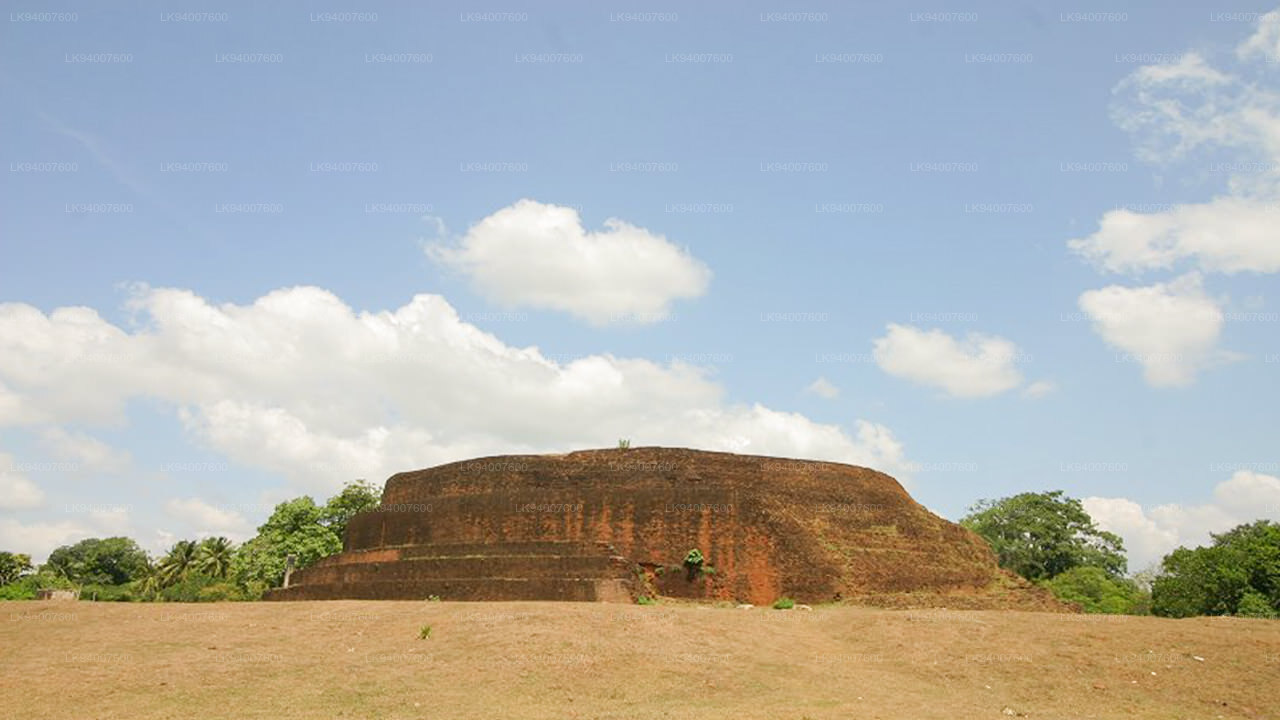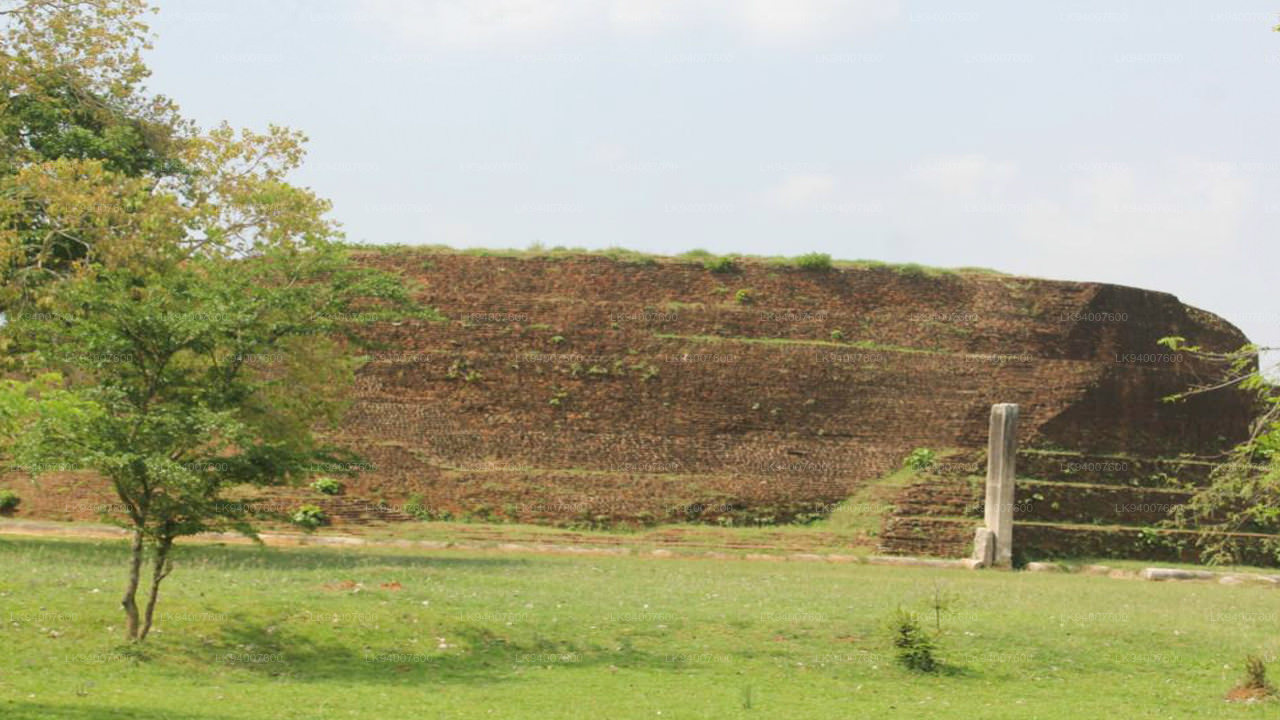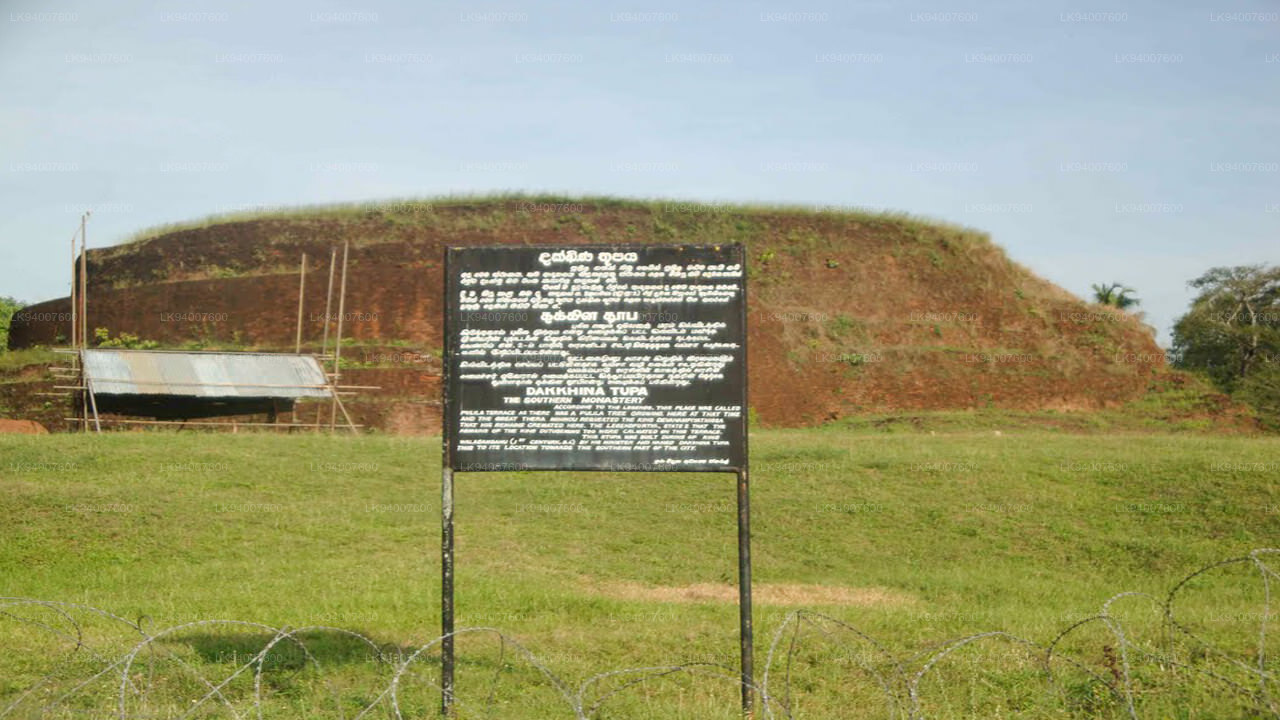
Ciudad de Anuradhapura
Anuradhapura pertenece a la Provincia Central del Norte de Sri Lanka. Anuradhapura es una de las antiguas capitales de Sri Lanka, famosa por sus ruinas bien conservadas de la antigua civilización de Sri Lanka. La ciudad, declarada Patrimonio de la Humanidad por la UNESCO, se encuentra a 205 km al norte de la actual capital, Colombo, en Sri Lanka.
Dakkhina Stupa



Dakkhina Stupa
Dakkhina Stupa is a 2nd-century BC large brick Stupa in Anuradhapura, Sri Lanka. Earlier thought to be a monument of King Elara, it was later identified as the Stupa of ancient Dakini (Dakkhina) Vihara by Senarath Paranavithana with the help of a Brahmi inscription of the 3rd century A.D. unearthed from the ground between the southern and western Vahalkadas of the Stupa.
This structure was for centuries locally known as the tomb stone of king Ellalan, known as Elara Sohona, which was worshipped by Tamils and Sinhalese. However, some were not agree with this identification it is generally accepted that this Stupa has been built over the cremation site of King Dutugemunu.
History
According to the legends this site was known as the Pulila terrace as there was a growing Pulila tree at that time period and the thero, Mihindu had requested from the King Devanampiya Tissa (307 BC – 267 BC) to cremate his remains here. The legend further states that the remains of King Dutugamunu were also cremated in this terrace. It is said that this Stupa was constructed and named as Dhakkina thupa by a minister during the reign of King Valagamba (103 BCE and c. 89–77 BCE)
Acerca del distrito de Anuradhapura
Anuradhapura pertenece a la Provincia Central del Norte de Sri Lanka. Anuradhapura es una de las antiguas capitales de Sri Lanka, famosa por sus ruinas bien conservadas de la antigua civilización de Sri Lanka. La ciudad, declarada Patrimonio de la Humanidad por la UNESCO, se encuentra a 205 km al norte de la actual capital, Colombo, en Sri Lanka. En la ciudad sagrada de Anuradhapura y sus alrededores se encuentran numerosas ruinas. Estas consisten en tres tipos de edificios: dagobas, edificios monásticos y pokuna (estanques). La ciudad contaba con algunos de los sistemas de riego más complejos del mundo antiguo. Ubicada en la zona árida del país, la administración construyó numerosos tanques para regar la tierra. La mayoría de la población civil es cingalesa, mientras que en el distrito viven tamiles y moros de Sri Lanka.
Acerca de la Provincia Central del Norte
La Provincia Central del Norte, que es la provincia más grande del país, cubre el 16% de la superficie total del país. La Provincia Central del Norte consta de dos distritos llamados Polonnaruwa y Anuradhapure. Anuradhapura es el distrito más grande de Sri Lanka. Su área es de 7.128 km². La Provincia Central del Norte tiene numerosos potenciales para que los inversores inicien sus negocios, especialmente la agricultura, las industrias basadas en la agricultura y los sectores ganaderos. Más del 65% de la gente de la Provincia Central del Norte depende de la agricultura básica y las industrias basadas en la agricultura. NCP también se llama "Wew Bendi Rajje" porque hay más de 3.000 tanques de escala mediana y grande situados en la provincia. Sri maha bodiya, Ruwanweli seya, Thuparama dageba, Abayagiri Monastry, Polonnaruwa Rankot wehera, Lankathilake están asustados











